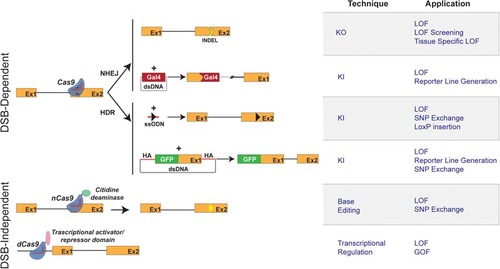- Title
-
Combining Zebrafish and CRISPR/Cas9: Toward a More Efficient Drug Discovery Pipeline
- Authors
- Cornet, C., Di Donato, V., Terriente, J.
- Source
- Full text @ Front Pharmacol
|
Schematic representation of CRISPR/Cas9 techniques and applications in zebrafish. |

